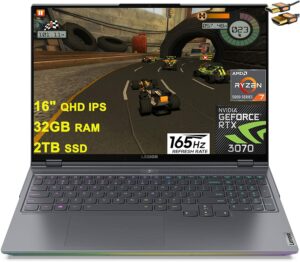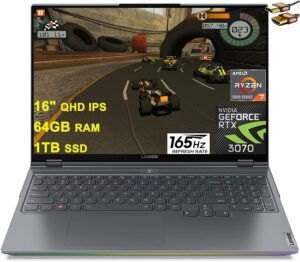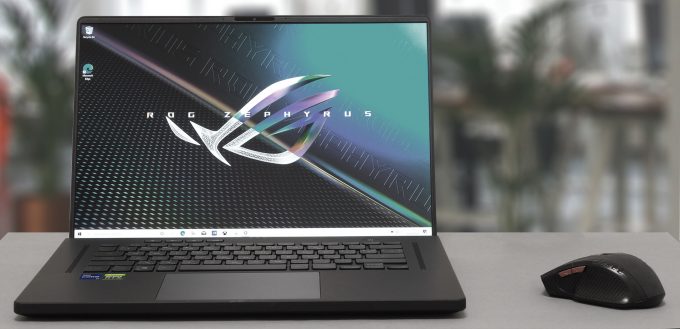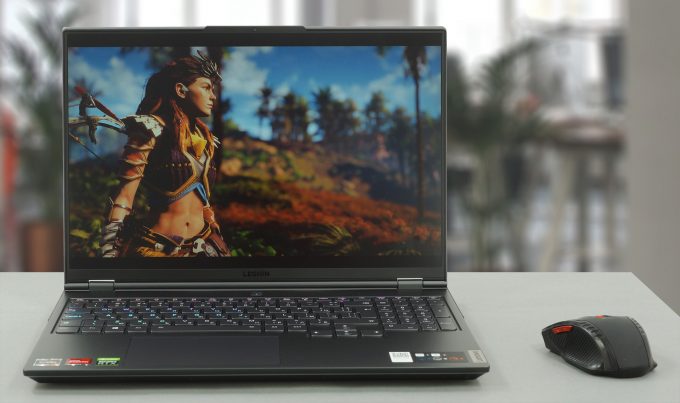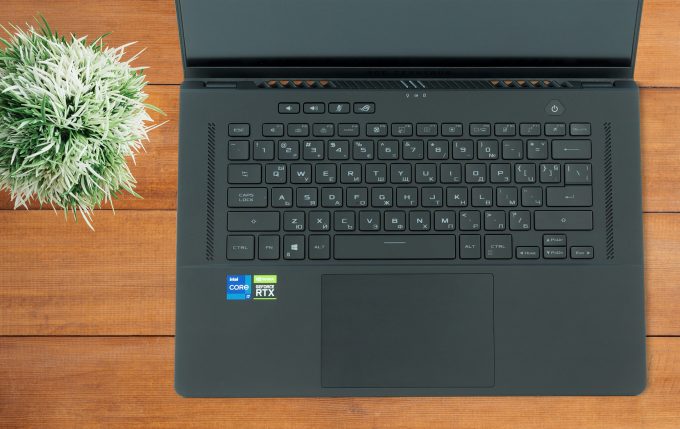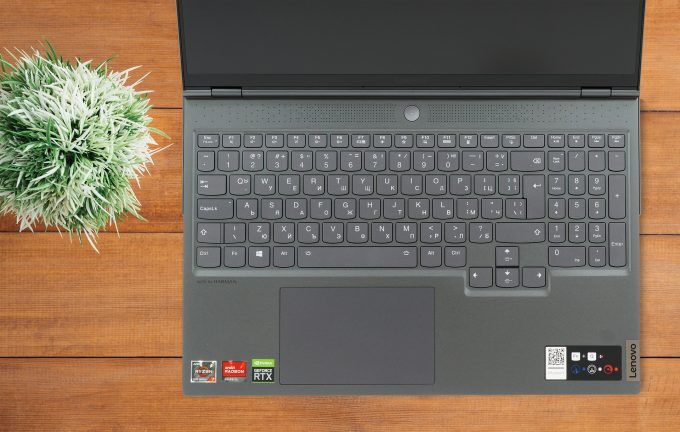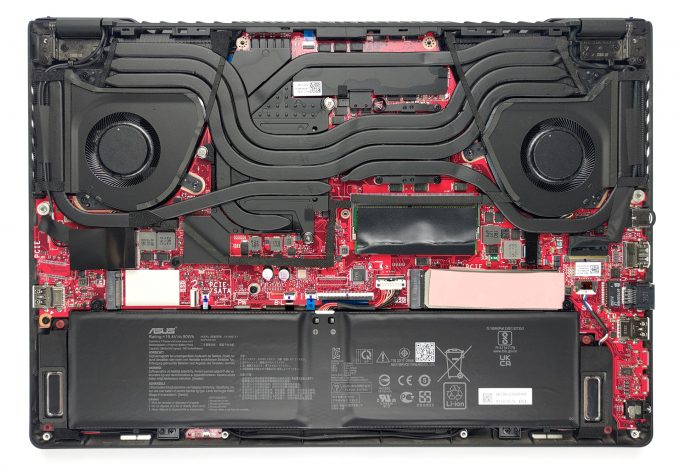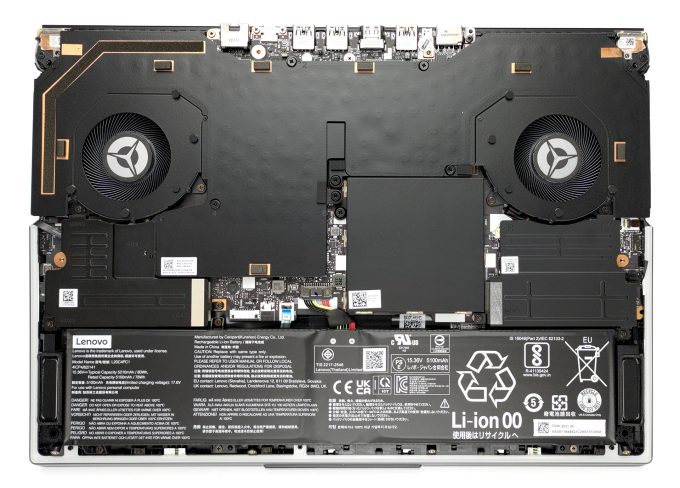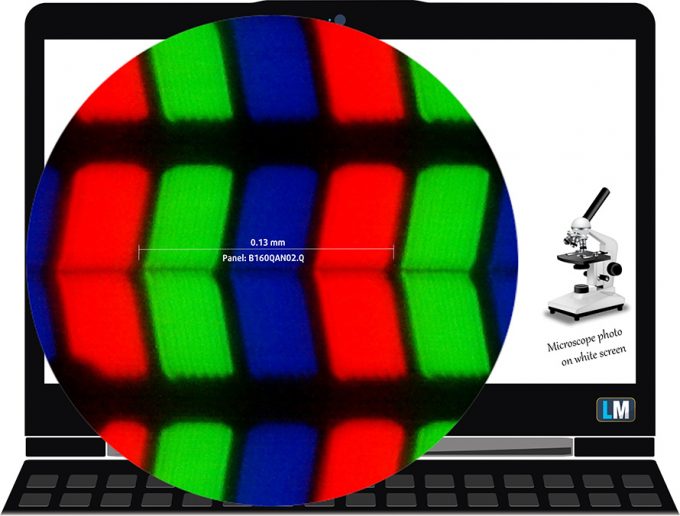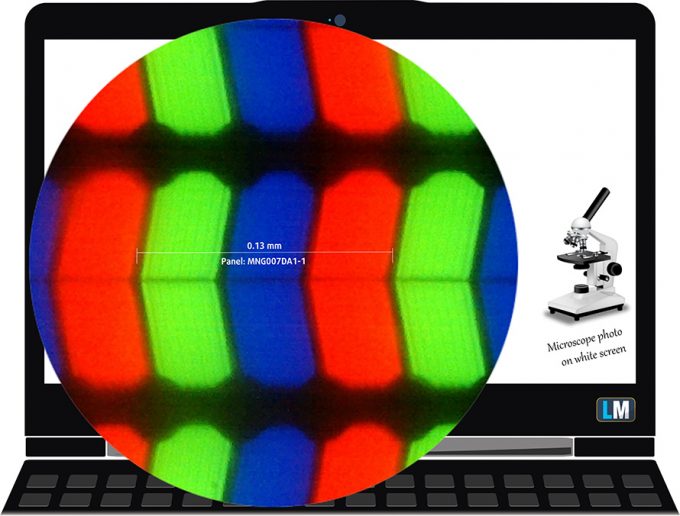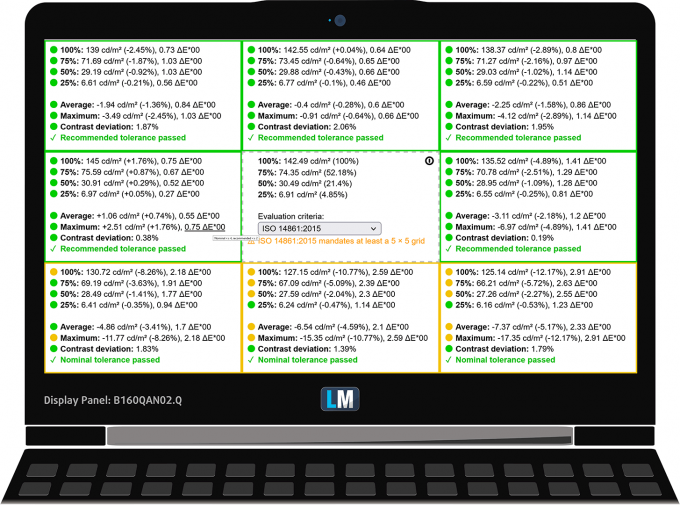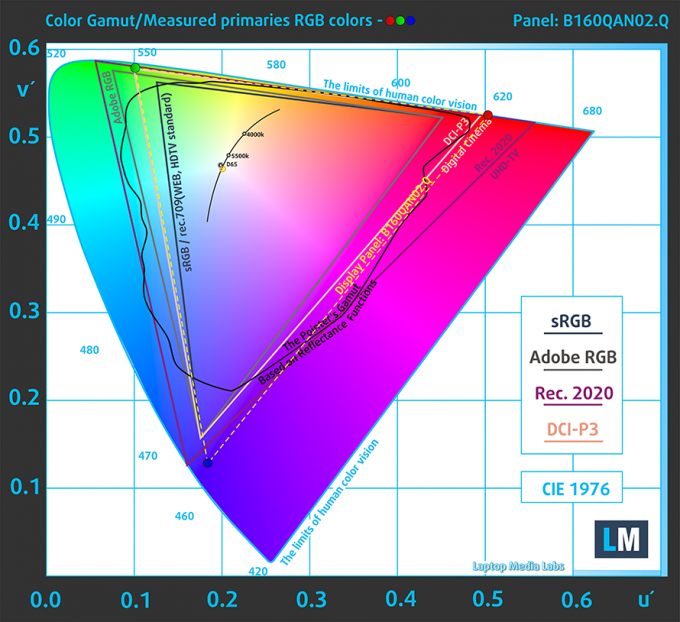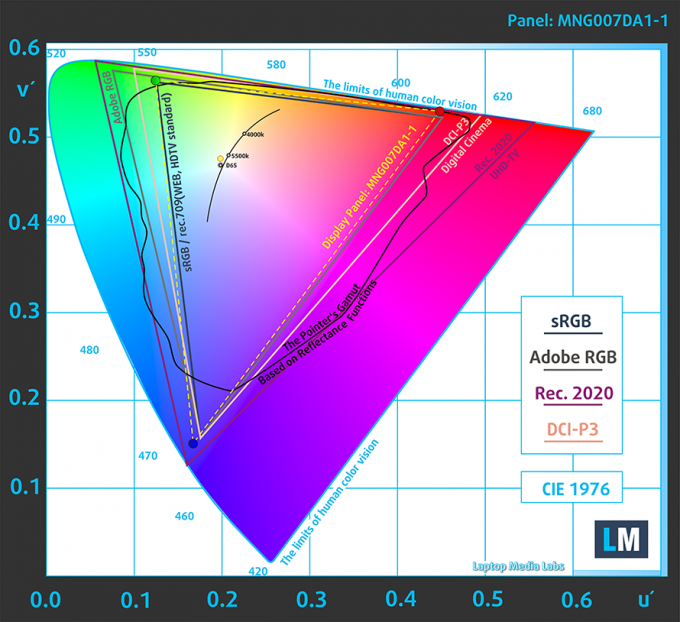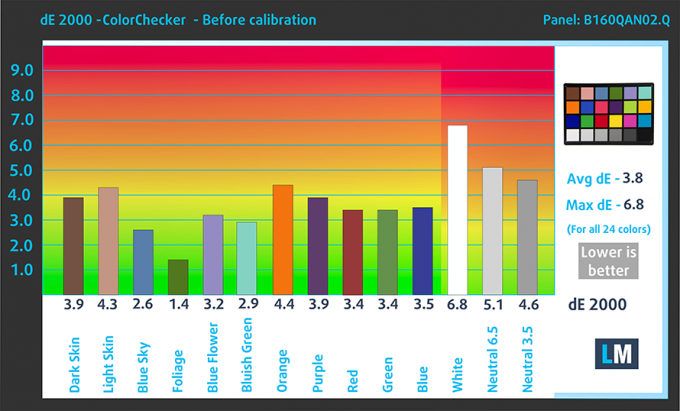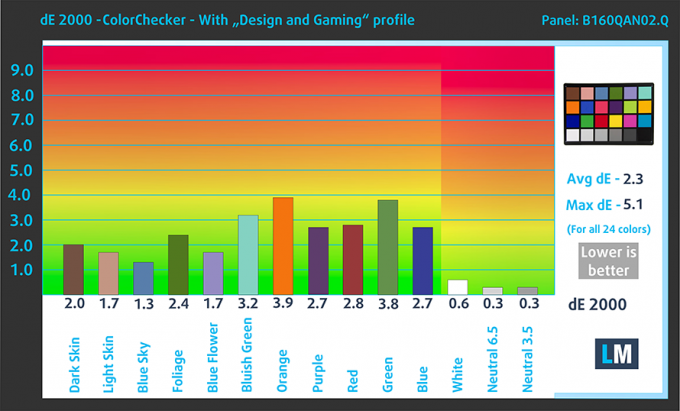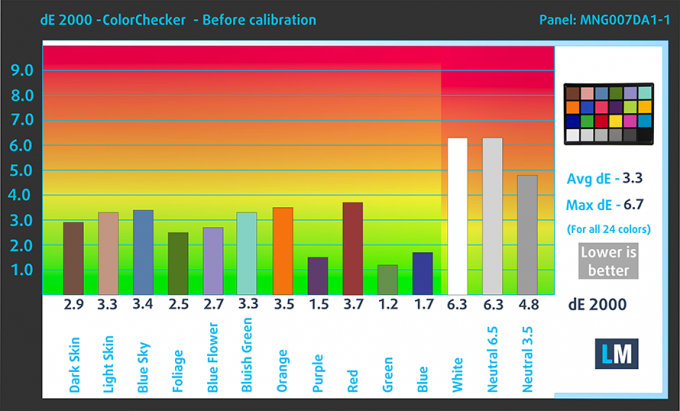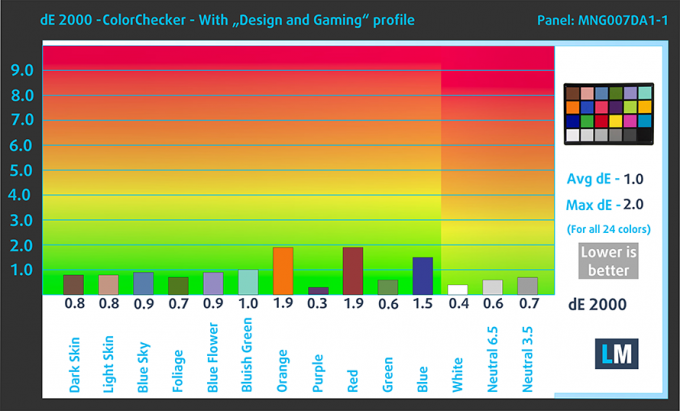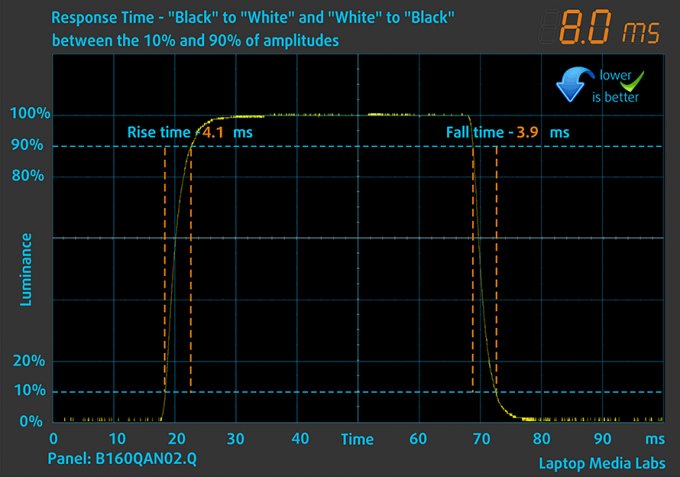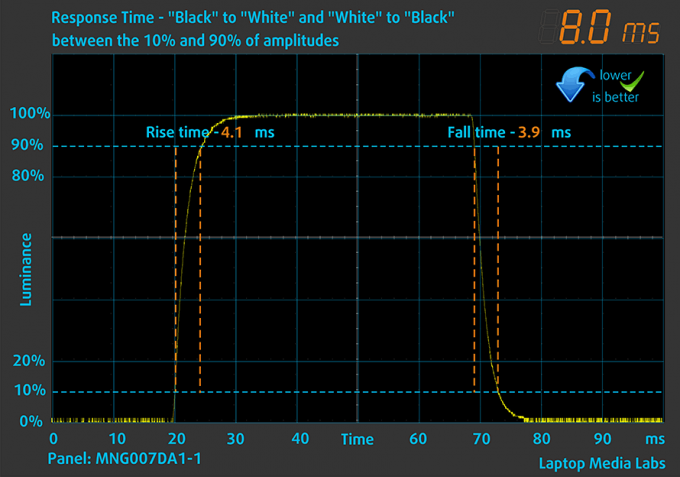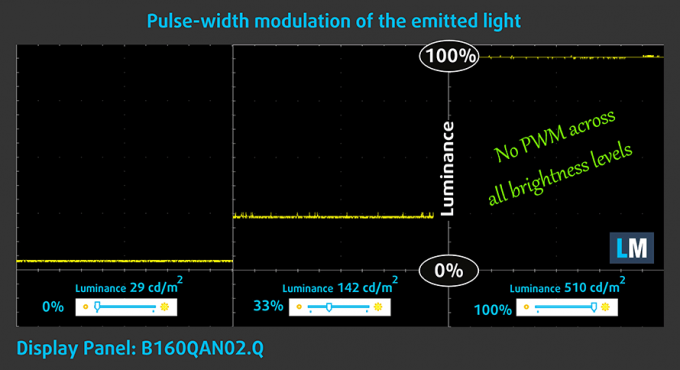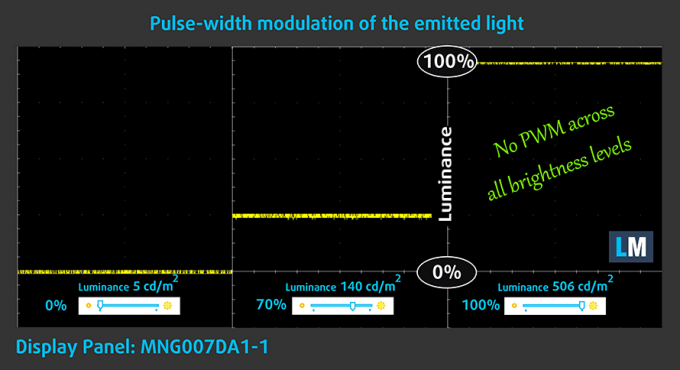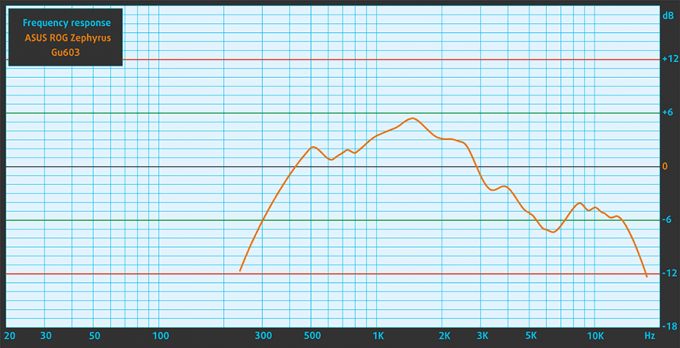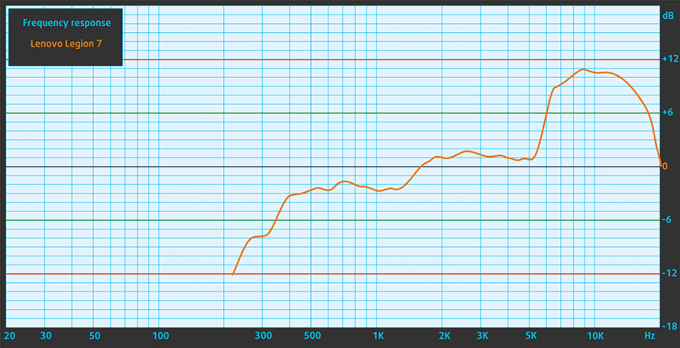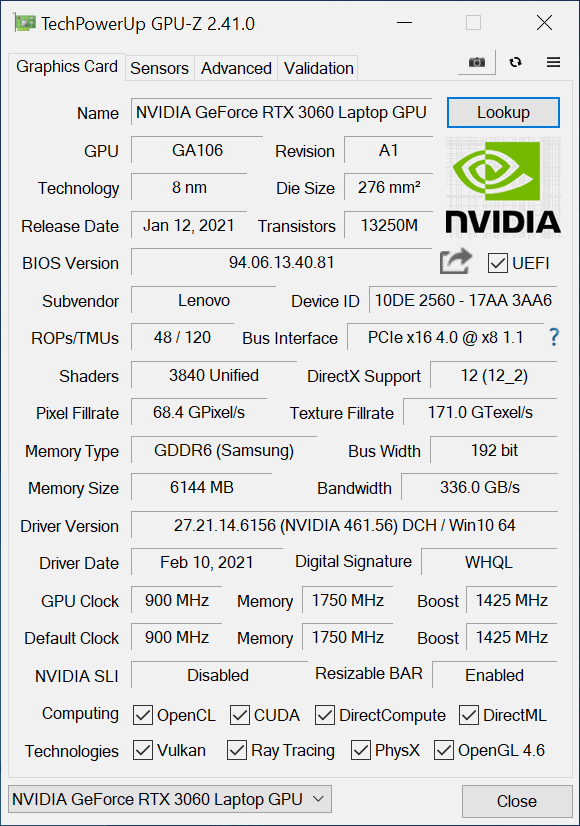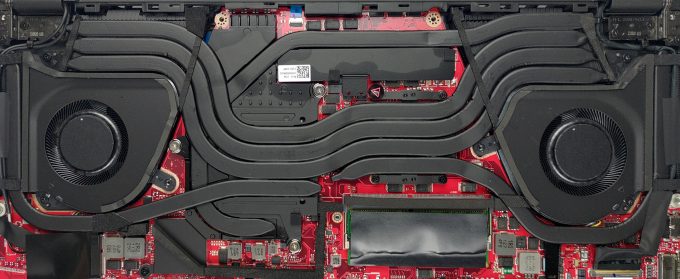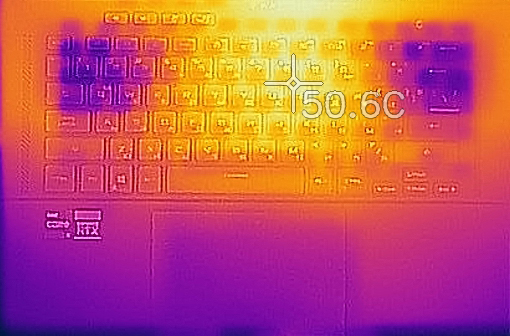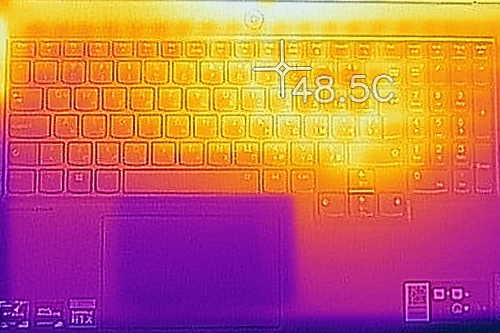[In-Depth Comparison] ASUS ROG Zephyrus M16 GU603 vs Lenovo Legion 7 (16″, 2021) – Portability vs All Out performance
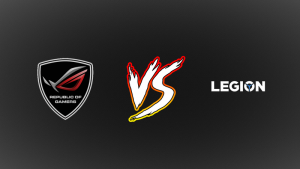 ASUS has been the king of gaming laptops ever since gaming laptops were a thing. Their ROG brand is super strong and that makes the notebooks sell really well. Of course, their laptops being some of the best also helps tremendously, but in 2021, nearly every manufacturer has access to new technologies and fast hardware, making branding more important than ever.
ASUS has been the king of gaming laptops ever since gaming laptops were a thing. Their ROG brand is super strong and that makes the notebooks sell really well. Of course, their laptops being some of the best also helps tremendously, but in 2021, nearly every manufacturer has access to new technologies and fast hardware, making branding more important than ever.
For example, Lamborghini and Ferrari will always sell really well, despite there being other, undoubtedly faster cars in existence. However, owning a vehicle from these specific manufacturers is even sweeter, since you’ve seen them from when you were a kid and the brand is already engraved onto your mind.
Today we are comparing a laptop from one of the staples in gaming, the ASUS ROG Zephyrus M16 GU603 against an up a brand that also has been well established, but doesn’t have the history of ROG, in the face of the Lenovo Legion 7 (16″, 2021).
ASUS ROG Zephyrus M16 GU603: Full Specs / In-depth Review
Lenovo Legion 7 (16″, 2021): Full Specs / In-depth Review
ASUS ROG Zephyrus M16 GU603 configurations:
Lenovo Legion 7 (16″, 2021) configurations:
Contents
Design and construction
The laptop comes in a large box and two charging bricks, one of which is smaller and should be used when you’re traveling. Despite using a 16-inch screen, the laptop is decently portable, managing to weigh under 2.00 kg and having a profile of nearly 20 mm. In terms of the design itself, we have a metal lid with a prismatic film and dot pattern, which lights up in a very interesting way. The rest of the body is made of plastic but is surprisingly sturdier than the lid, which is made of metal. Speaking about the lid, it opens easily with one hand, revealing the Ergolift hinge mechanism, which acts as a lever and lifts up the base of the device, giving the cooling more room to breathe.
Going over to the Legion 7, it also sports a 16-inch display, but is way thicker and heavier, having a weight of 2.50 kg and a profile of 23.5 mm at its thickest point. Contrasting the ASUS laptop, it is made entirely made out of aluminum. When you pair that with a boxy design, you get a resilient and tough laptop that is able to withstand bends and leaves no room for flexing. The design itself is minimal, with a tastefully placed Legion logo on the upper left corner, which lights up. The lid of the Legion 7 also opens easily with a single hand, signifying stable and well-balanced hinges.
Keyboard and touchpad
The input devices on the Zephyrus M16 laptop are pretty good. The keyboard has long key travel and clicky feedback, although the keycaps are a bit small, despite the unit lacking a NumPad segment. As for the touchpad, it has a large size, which is appreciated, along with a glass surface, which makes gliding and tracking exceptional.
The Legion keyboard not only has a large NumPad segment but also uses larger keycaps, as its keyboard spreads along the entire width of the base. The key travel is shorter, but the feedback is still plenty clicky. The unit also has an RGB backlight, while the glass touchpad is extremely smooth and accurate.
Ports
The I/O on the Zephyrus M16 has two USB Type-A 3.2 ports, with one Gen. 2 port and one Gen. 1 port, two USB Type-C 3.2 Gen. 2 ports, one of which also has Thunderbolt 4 support, an HDMI and RJ-45 connectors, a 3.5 mm audio jack and a MicroSD card reader.
The Legion 7 has a way wider I/O, with a total of three USB Type-A 3.2 (Gen. 1) ports and three USB Type-C 3.2 (two Gen. 2 and one Gen. 1) ports, an HDMI and Ethernet connectors, and a 3.5 mm audio jack.
ASUS ROG Zephyrus M16 GU603
Lenovo Legion 7 (16″, 2021)
Spec sheet
ASUS ROG Zephyrus M16 GU603 series
- Dimensions
- 355 x 243 x 19.9 mm (13.98" x 9.57" x 0.78")
- Weight
- 1.90 kg (4.2 lbs)
- Price
- Not Available
Lenovo Legion 7 (16″ AMD, 2021) series
- Dimensions
- 356 x 261 x 20.1 - 23.5 mm (14.02" x 10.28" x 0.79")
- Weight
- 2.50 kg (5.5 lbs)
- Price
- Not Available
Disassembly, Upgrade options
Both laptops are held together by 10 Phillips-head screws, which once removed, allow us to see inside these gaming beasts. The Zephyrus M16 has its slots and cooling exposed, revealing up to 16GB of soldered RAM and one SODIMM slot, for up to 48GB of DDR4 memory. and two SSD slots, one of which supports both PCIe and SATA, while the other one had PCIe x4 Gen 4 support.
The Legion 7 has its slots under metal covers, which can also dissipate heat. There are two SODIMM RAM slots, for up to 64GB of DDR4 memory in dual-channel mode and two M.2 PCIe x4 drive slots.
Display quality
The ASUS laptop has two IPS display options, with both of them having a 16-inch diagonal and a 16:10 aspect ratio. You can choose between an FHD+ display with a 144Hz refresh rate or a QHD+ display with a 165Hz refresh rate. Our laptop came with the QHD+ display, which has a pixel density of 189 PPI, a pitch of 0.13 x 0.13 mm, and a Retina distance of 46 cm or 18 inches.
The Legion 7 has a single QHD+ IPS display option, also with a 16-inch diagonal, and a 16:10 aspect ratio. The display has the same pixel density, pitch, and Retina distance as the panel on the ASUS laptop.
Both laptops display excellent viewing angles. Below we have pictures at 45 degrees to evaluate quality.
Both panels have a max brightness of around 500 nits, with the Zephyrus M16 having a higher deviation of 12%, meaning that the brightness is less even across the display area. The contrast ratio is higher on the ASUS laptop, calculating at 1200:1, while the Legion 7 caps at 1170:1. Despite that, both displays will do just fine for professional work.
Color coverage
To make sure we are on the same page, we would like to give you a little introduction to the sRGB color gamut and the Adobe RGB. To start, there’s the CIE 1976 Uniform Chromaticity Diagram that represents the visible specter of colors by the human eye, giving you a better perception of the color gamut coverage and the color accuracy.
Inside the black triangle, you will see the standard color gamut (sRGB) that is being used by millions of people on HDTV and on the web. As for the Adobe RGB, this is used in professional cameras, monitors, etc for printing. Basically, colors inside the black triangle are used by everyone and this is the essential part of the color quality and color accuracy of a mainstream notebook.
Still, we’ve included other color spaces like the famous DCI-P3 standard used by movie studios, as well as the digital UHD Rec.2020 standard. Rec.2020, however, is still a thing of the future and it’s difficult for today’s displays to cover that well. We’ve also included the so-called Michael Pointer gamut, or Pointer’s gamut, which represents the colors that naturally occur around us every day.
The yellow dotted line shows ASUS ROG Zephyrus M16 GU603’s and Lenovo Legion 7 (16″, 2021)’s color gamut coverage.
The Zephyrus M16 fully covers both the sRGB and DCI-P3 color gamuts, while the Legion 7 covers 98% of the sRGB color gamut.
Color accuracy
We tested the accuracy of the display with 24 commonly used colors like light and dark human skin, blue sky, green grass, orange, etc. You can check out the results at factory condition and also, with the “Design and Gaming” profile.
Below you can check the results from the test of both laptops, with both the factory settings (left) and with our “Design and Gaming” profile applied (right).
ASUS ROG Zephyrus M16 GU603
Lenovo Legion 7 (16″, 2021)
Response time (Gaming capabilities)
We test the reaction time of the pixels with the usual “black-to-white” and “white-to-black” methods from 10% to 90% and vice versa.
Both laptops had a very fast response time of 8.0 ms.
Health Impact / PWM (Blue light)
PWM – Screen flickering
Pulse-width modulation (PWM) is an easy way to control monitor brightness. When you lower the brightness, the light intensity of the backlight is not lowered, but instead turned off and on by the electronics with a frequency indistinguishable to the human eye. In these light impulses, the light/no-light time ratio varies, while brightness remains unchanged, which is harmful to your eyes. You can read more about that in our dedicated article on PWM.
In terms of flickering both panels show no usage of PWM across any brightness levels.
Blue light emissions
Installing our Health-Guard profile not only eliminates PWM but also reduces the harmful Blue Light emissions while keeping the colors of the screen perceptually accurate. If you’re not familiar with the Blue light, the TL;DR version is – emissions that negatively affect your eyes, skin, and your whole body. You can find more information about that in our dedicated article on Blue Light.
Buy our profiles
Here at LaptopMedia, we create a set of custom-tailored profiles for every notebook we review. They boost the productivity of display and reduce negative effects such as blue light emissions and PWM. You can read more about them here.
ASUS ROG Zephyrus M16 GU603 16.0″ WQXGA IPS AUO B160QAN02.Q (AUOC199): Buy our profiles
Lenovo Legion 7 (16″, 2021) 16.0″ WQXGA IPS MNG007DA1-1 (CSO1600): Buy our profiles
Sound
The ROG Zephyrus M16 uses a total of six speakers, two of which are at the front, sitting on the left and right sides. The four additional units are on the bottom panel, firing in opposite directions, which minimizes vibrations. The setup produces clear and high-quality audio with no deviations from clarity across the entire frequency range.
As for the Legion device, it gets Harman speakers, which are found on the bottom. The setup consists of two units, on the left and right sides of the bottom panel. In terms of quality, the sound that the speakers produce is great, with the lows and mids being clear of deviations. Sadly, there is a rise in the high frequencies, but in general, we are satisfied with the audio that we got.
Battery
The way we conduct our battery tests is with the Windows Better performance setting turned on, screen brightness adjusted to 120 nits, and all other programs turned off except for the one we are testing the notebook with. The ROG laptop has a larger 90Wh battery unit. while the Legion 7 is left with an 80Wh unit. In terms of battery life, the Zephyrus completely demolishes its opponent, lasting for seven hours more in our web browsing test and three hours more in the video playback test.
In order to simulate real-life conditions, we used our own script for automatic web browsing through over 70 websites.
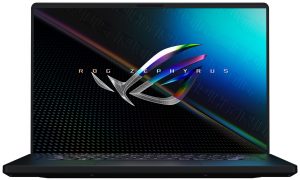
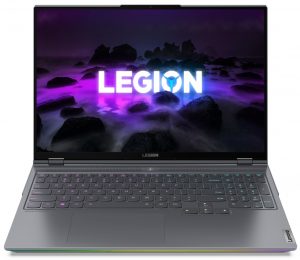
For every test like this, we use the same video in HD.


Performance
The ROG Zephyrus is equipped with the 11th Gen Tiger Lake H45 processors, with the consumer having to choose between the Core i7-11800H and the Core i9-11900H. On the other hand, the Legion 7 come with an AMD CPU selection, giving you the choice between the Ryzen 7 5800H and the Ryzen 9 5900HX. As for the graphics, both laptops have several RTX Ampere options, with the M16 relying on the RTX 3050 Ti (75W), the RTX 3060 (95W), and the RTX 3070 (100W), while the Legion 7 gets access to a higher-powered RTX 3060 with a 130W TDP, an RTX 3070 (140W), and an RTX 3080 (165W).
CPU benchmarks
Here we tested the Core i7-11800H and the Ryzen 7 5800H. The Core i7 scored higher in both of our benchmarks, with a lead of 5% in the Cinebench 20 test, while also being 0.8 seconds faster in the Photoshop test.
Results are from the Cinebench R23 CPU test (the higher the score, the better)
Results are from our Photoshop benchmark test (the lower the score, the better)
GPU benchmarks
Here we tested the RTX 3070 (100W) and the RTX 3060 (130W). While the RTX 3060 does have a higher TDP, in the end, it succumbs to the power of its bigger brother, as the RTX 3070 performs 16%, 28%, and 18% better in 3DMark Fire Strike, Unigine Heaven 4.0, and Unigine Superposition, respectively.
Results are from the 3DMark: Time Spy (Graphics) benchmark (higher the score, the better)
Results are from the 3DMark: Fire Strike (Graphics) benchmark (higher the score, the better)
Results are from the Unigine Superposition benchmark (higher the score, the better)
Gaming tests

| Rise of the Tomb Raider (2016) | Full HD, Medium (Check settings) | Full HD, Very High (Check settings) | Full HD, MAX (Check settings) |
|---|---|---|---|
| ASUS ROG Zephyrus M16 GU603 – RTX 3070 (100W) | 132 fps | 98 fps | 69 fps (+6%) |
| Lenovo Legion 7 (16″, 2021) – RTX 3060 (130W) | 158 fps (+20%) | 98 fps | 65 fps |

| Tom Clancy’s Ghost Recon Wildlands | Full HD, High (Check settings) | Full HD, Very High (Check settings) | Full HD, Ultra (Check settings) |
|---|---|---|---|
| ASUS ROG Zephyrus M16 GU603 – RTX 3070 (100W) | 108 fps (+11%) | 95 fps (+13%) | 65 fps (+16%) |
| Lenovo Legion 7 (16″, 2021) – RTX 3060 (130W) | 97 fps | 84 fps | 56 fps |

| Shadow of the Tomb Raider (2018) | Full HD, Medium (Check settings) | Full HD, High (Check settings) | Full HD, Highest (Check settings) |
|---|---|---|---|
| ASUS ROG Zephyrus M16 GU603 – RTX 3070 (100W) | 100 fps | 94 fps | 78 fps (+5%) |
| Lenovo Legion 7 (16″, 2021) – RTX 3060 (130W) | 113 fps (+13%) | 109 fps (+16%) | 74 fps |
Temperatures and comfort
The laptops have gone in different directions when it comes to cooling, with the M16 relying on a pretty standard setup with a total of six heat pipes. Three of them are shared between the CPU and GPU, with two others cooling each of them separately. The last heat pipe is there for the VRM modules and the graphics memory.
In the case of the Legion 7, we have a vapor chamber, along with two fans and four heat sinks.
Max CPU load
In this test we use 100% on the CPU cores, monitoring their frequencies and chip temperature. The first column shows a computer’s reaction to a short load (2-10 seconds), the second column simulates a serious task (between 15 and 30 seconds), and the third column is a good indicator of how good the laptop is for long loads such as video rendering.
| Intel Core i7-11800H (45W TDP) | 0:02 – 0:10 sec | 0:15 – 0:30 sec | 10:00 – 15:00 min |
|---|---|---|---|
| ASUS ROG Zephyrus M16 GU603 | 3.87 GHz (B+68%) @ 95°C @ 106W | 3.90 GHz (B+70%) @ 95°C @ 109W | 3.58 GHz (B+56%) @ 86°C @ 80W |
The Core i7’s temperature spikes in the first few seconds of the test, quickly reaching 95°C, while the clock speed was close to 4.00 GHz. In the last minutes of the test, the temperature went down by 9°C, while the clock speed hovered at 3.58 GHz.
| AMD Ryzen 7 5800H (45W TDP) | 0:02 – 0:10 sec | 0:15 – 0:30 sec | 10:00 – 15:00 min |
|---|---|---|---|
| Lenovo Legion 7 (16″, 2021) | 3.41 GHz (B+7%) @ 71°C | 3.41 GHz (B+7%) @ 75°C | 3.53 GHz (B+10%) @ 87°C |
The vapor chamber really does wonders, keeping the CPU within more than reasonable temps, while keeping the clock speeds above the base.
Real-life gaming
| NVIDIA GeForce RTX 3070 | GPU frequency/ Core temp (after 2 min) | GPU frequency/ Core temp (after 30 min) |
|---|---|---|
| ASUS ROG Zephyrus M16 GU603 | 1545 MHz @ 75°C @ 100W | 1520 MHz @ 81°C @ 100W |
In the GPU field, the RTX 3070 maintained decent clock speeds and temperatures, with 81°C being the highest temperature that we observed.
| NVIDIA GeForce RTX 3060 | GPU frequency/ Core temp (after 2 min) | GPU frequency/ Core temp (after 30 min) | GPU frequency/ Core temp (Max Fan) |
|---|---|---|---|
| Lenovo Legion 7 (16″, 2021) | 1867 MHz @ 70°C @ 126W | 1858 MHz @ 74°C @ 127W | – |
The RTX 3070 (130W) reached really high speeds, while the temperature doesn’t go beyond 74°C.
Gaming comfort
The Legion 7 is a few degrees cooler than its opponent, with a 2°C difference. In terms of noise, both laptops get quite loud, in order to keep the temperatures that they do.
Verdict
These two systems are very different. What ASUS tries to achieve with the Zephyrus M16 is to bridge the gap between portable and powerful. The laptop still has more than enough performance, while packing everything in a minimal package that is relatively light and thin. The Legion 7, on the other hand, sacrifices portability for the sake of performance, offering high TDP GPUs in a bulky body.
In terms of design, the Legion 7 is entirely built out of aluminum, while the M16 has a metallic lid and a plastic body. Despite that, both laptops are very sturdy and durable. The notebooks also look great, utilizing minimalistic designs, with a more rectangular approach.
Both laptops have good keyboards, but the Legion 7 unit just offers more, such as a NumPad and larger keycaps. The touchpads on the notebooks are each covered with glass and offer great gliding and tracking. The Legion 7 also has a way wider I/O in terms of quantity, but lacks Thunderbolt support, due to having AMD hardware, as well as a MicroSD card reader.
The display on the ROG laptop has wider color coverage, but worse color accuracy than the Legion 7, especially when we apply our Design and gaming profile. The audio is pretty even between the two, but the Zephyrus obviously has an advantage with its six-speaker setup, which is partly front-firing. The Zephyrus device also has a way longer battery life, while also offering more performance in the CPU and GPU tests. The real-life gaming benchmarks went pretty even, with both laptops being better in different games and settings presents.
Lastly, the cooling is where the Legion 7 shines. The vapor chamber inside keeps the CPU and GPU pretty cool, while allowing them to reach and maintain decent clock speeds. Still, the Ryzen 7 5800H that was inside the Legion 7 seems to be held back by something, as we are pretty sure it can hit higher speeds and offer more performance.
So, which device to pick? If portability is important to you, the M16 is the laptop to go for. If you want an aluminum design and faster graphics, the Legion 7 is made for you.
Why choose ASUS ROG Zephyrus M16 GU603?
- + Lighter design that is plenty durable
- + Fully covers the DCI-P3 color gamut
- + Way longer battery life
Why choose Lenovo Legion 7 (16″, 2021)?
- + Fully aluminum design
- + Has a vapor chamber
- + Offers an RTX 3080
- + Some of the widest I/O that we have seen
ASUS ROG Zephyrus M16 GU603: Full Specs / In-depth Review
Lenovo Legion 7 (16″, 2021): Full Specs / In-depth Review
All ASUS ROG Zephyrus M16 GU603 configurations:
All Lenovo Legion 7 (16″, 2021) configurations:

